DIE MESSINGKÄFER, Der Schweiz größte Falschspieler
Posted: February 8, 2015 Filed under: 60s, Cartoon Sleeves, Switzerland 3 Comments


 This record presents the marching brass band “Die Messingkäfer” – The Brass Beetles, from Basel. A regular of the Basler Fasnacht, they were guests of the Carnival celebrations held in Mainz and many other German cities on the Rhine in the mid-1960s. The narrator of the record, speaking with a broad Swiss accent, calls Guggenmusik “the Pop-Art of Faßnacht”, a pretty good description of the humour and “crazy disharmonic harmony” of this style of music.
This record presents the marching brass band “Die Messingkäfer” – The Brass Beetles, from Basel. A regular of the Basler Fasnacht, they were guests of the Carnival celebrations held in Mainz and many other German cities on the Rhine in the mid-1960s. The narrator of the record, speaking with a broad Swiss accent, calls Guggenmusik “the Pop-Art of Faßnacht”, a pretty good description of the humour and “crazy disharmonic harmony” of this style of music.DIE MESSINGKÄFER, Seite 2


SEIBI SCHRÄNZER BASEL 1949, Taiger Rägg, 1974
Posted: February 8, 2015 Filed under: 70´s, Switzerland Leave a comment


 Carnival is not officially celebrated in Berlin, but because it´s Carnival time now, here´s a Carnival record from Basel, Switzerland.
Carnival is not officially celebrated in Berlin, but because it´s Carnival time now, here´s a Carnival record from Basel, Switzerland.
Deliberately playing out-of-tune may seem like a relatively modern stylistic device in popular music, but it has a long tradition in Switzerland, even dating back to the middle ages. During Carnival, amateur brass bands specialize in a brand of noisy music called Guggenmusik, a concerted cacophony where certain instruments play in tune while others deliberately do not. The point is to submerge the original song in noise, while still keeping it recognizable.
Today Guggenmusik bands have current pop songs in their repertoire. In 1974 the Seibi Schränzer from Basel recorded their interpretations of Hernando´s Hideaway (from the 1950s musical/movie The Pajama Game), Bel Ami (a German schlager from the 30s) , Tiger Rag (Original Dixieland Jass Band, 1917) and Georgia on my Mind (written by Hoagy Carmichael in 1930 and made famous by Ray Charles through his version in 1960).
Beautiful noise!
SEIBI SCHRÄNZER BASEL 1949, Hernandos haid ewei, 1974
SEIBI SCHRÄNZER BASEL 1949, Bel ami, 1974
SEIBI SCHRÄNZER BASEL 1949, Taiger Rägg, 1974
SEIBI SCHRÄNZER BASEL 1949, Tschortschia, 1974
Einen kleinen Text über diese Platte schrieb ich bereits im Oktober 2013 in dere Jungle World.
THE DING DOO DATTLERS, Modern Shave Charleston
Posted: May 28, 2014 Filed under: 60s, Jazz Records, Promotional Records, Switzerland 1 Comment


 A while back, Dropbox temporarily blocked my files because of too much traffic, but now everything is working again. So here´s a new post….
A while back, Dropbox temporarily blocked my files because of too much traffic, but now everything is working again. So here´s a new post….
Hazy Osterwald, the undisputed King of Swiss pop and jazz music, died in 2012 at the age of 90. Without ever trying very hard, even I have collected a bunch of his records. This promotional record, made for a brand of men’s safety razors, has never been reissued.
For obvious reasons….
THE DING DOO DATTLERS, Modern Shave Charleston
THE DING DOO ]DATTLERS, Chicochino Cha-Cha-Cha
RIO GREGORY – HIS PIANO AND HIS RHYTHM, International Piano Medley, 1955
Posted: July 27, 2013 Filed under: 50s, Instrumental Records, Jazz Records, Switzerland 3 Comments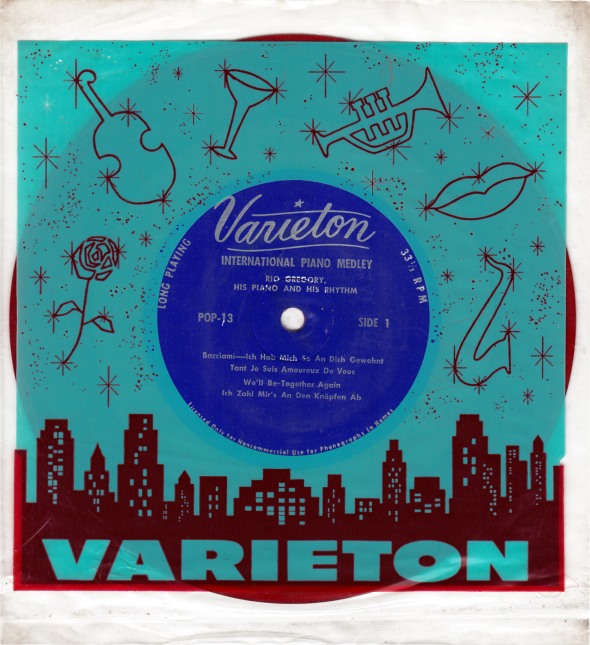

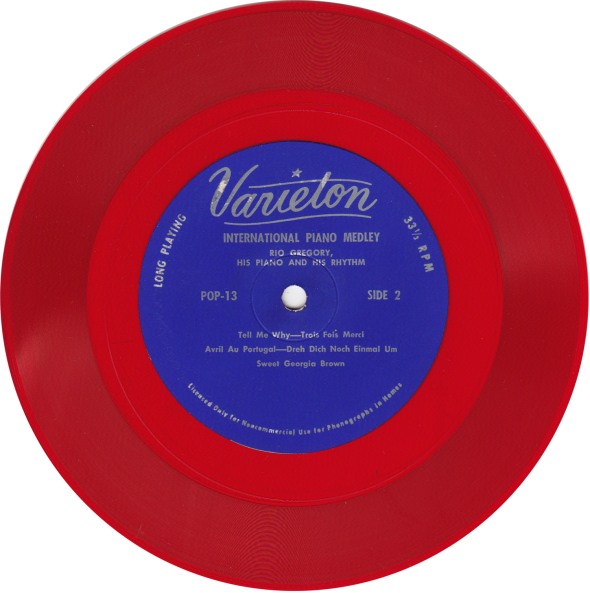 This record has puzzled me for years. Who was this guy with the colorful name ? Only recently a German Wikipedia article appeared that cleared things up. This is my translation of the German article:
This record has puzzled me for years. Who was this guy with the colorful name ? Only recently a German Wikipedia article appeared that cleared things up. This is my translation of the German article:
Rio De Gregori (* September 22, 1919 in Zürich; † May 22, 1987 in Munich) was a Swiss jazz pianist and singer.
De Gregori learned to play the piano at age 7 and at fourteen started to collect jazz records by the likes of Duke Ellington and others. Although his parents wanted him to become a classical pianist, he started to perform professionally as a jazz musician. He worked with Willie Mac Allen (1939-40), James Boucher (1940- 41), Jo Grandjean (1942) and up until September 1944 with René Weiss and his orchestra. Then he got a job in Fred Böhler´s big band and stayed with them until 1945. The same year he founded his own big band, that included some of the best Swiss jazz musician like Stuff Combe, Bob Jaquillard, Jean Pierre Dupuis, Luc Hoffmann, Raoul Schmassmann, Kurt Weil and guest soloist Glyn Paque. After the breakup of his band he continued to work in a trio and as a soloist and also managed a bar in Ascona, Switzerland. He then settled in Munich, opened a night club and henceforth called himself Rio Gregory. He named the club Bar Ascona. Later he discovered pop singer Suzanne Doucet at Bar Ascona.
Rio Gregory recorded another four EPs worth of material for the Varieton label and some more records for Columbia, Elite and Harlekin. Despite the Wikipedia article, not one of them has ever been reissued.
Simple but nicely designed one-sided plastic Varieton company sleeve and red vinyl for the jazz collectors of 1955!
Enjoy:
FRITZ TRIPPEL TRIO, Boogie, 1960
Posted: March 28, 2012 Filed under: 60s, Cartoon Sleeves, Jazz Records, Switzerland 2 Comments
 Fritz Trippel was a Swiss jazz pianist. This EP was recorded August 28, 1960 in Stuttgart with Rolf Cizmek on bass and Henry Owen on drums.
Fritz Trippel was a Swiss jazz pianist. This EP was recorded August 28, 1960 in Stuttgart with Rolf Cizmek on bass and Henry Owen on drums.
FRITZ TRIPPEL TRIO, Boogie, 1960
JEAN COUROYER ORCHESTRA, Midnight Twist, 1962
Posted: January 14, 2011 Filed under: 60s, Switzerland, Twist Records, World | Tags: Midnight, Montreux, Music For Old People 6 Comments 
 “A popular melody is as international a language as you will find anywhere in this world of ours. You don´t have to know the text to hum or whistle a happy tune – no matter what country of origin.
“A popular melody is as international a language as you will find anywhere in this world of ours. You don´t have to know the text to hum or whistle a happy tune – no matter what country of origin.
It is therefore little wonder that dance band leader Jean Couroyer roams musically across many borders in gathering material for his recording and makes sure of the widest possible acceptance by selecting the most popular dance rhythms.” (J.H. Watson from the liner notes to International Hit Parade)
This is another Swiss Varieton LP that I bought together with the Aprés-Ski in Kitzbühel album. Varieton was a sub-label of the main Swiss label Ex-Libris, used for budget releases like this one. The production is not so bad though, using thick cardboard and slick printing. It looks almost like an american album. The illustration on the sleeve however looks like it was drawn in five minutes by somebody who was not into the job at all. And it probably was. Regrettably I have had similar experiences in the past. The customer doesn´t really care or know the difference and I don´t really care or have the time either. So I rush a job. But receiving some product weeks later that reeks of all the reluctance it was crafted with feels bad. It´s embarassing to do poor work. Luckily those jobs are the exception, but at least for some reason they are always the best paying.
The raw and bold brush work and the combination of the innocent big girl dancing with the bald little man stands out though. He´s hanging in mid-air and she´s missing an arm but there´s a primitive charm to it. Most certainly the rest of the album´s design was done by other people than the guy who did the sketch. The Ad Lib font used for the title of the album was designed in 1961 by Freeman Craw for the American Type Founders (ATF), so it was pretty hip at the time. When I see the font I think of Crypt Records, because they have used it excessively on their album covers and for their catalogues since the 1980´s.
Sure, all this analysis is redundant considering that apart from three twist songs the album is pretty forgettable, at least to my ears. But I buy some records for other reasons than the music and I do enjoy this restrained orchestra rock´n´roll that was made for old people. Maybe because I am old. Not a lot of information on the Internet about Jean Couroyer, but I guess he is from Switzerland.
JEAN COUROYER ORCHESTRA, Midnight Twist, 1962
JEAN COUROYER ORCHESTRA, The Boogie Twist, 1962
JEAN COUROYER ORCHESTRA, The Twist, 1962
BETTINA RAY, Bongo Cha-Cha-Cha, 1959
Posted: January 7, 2011 Filed under: 50s, Switzerland, World 2 Comments

 Last week my girlfriend and me returned safely from our snowboarding trip to Austria. Exhausted from the 12 hour bus ride but also energized from all the activity and the pure air way up in the Alps.
Last week my girlfriend and me returned safely from our snowboarding trip to Austria. Exhausted from the 12 hour bus ride but also energized from all the activity and the pure air way up in the Alps.
Here´s aprés-ski music from 50 years ago. Kitzbühel is still one of Austria’s best known and fanciest winter sport resorts. Of course the kind of music they play there today is much different. We were not in Kitzbühel but in another town, but I guess all these Austrian ski places are similar. Whatever the music would be like, we´re never doing any after-ski-partying anyway. It´s lame, but we´re too old. For us it´s all about snowboarding and hanging out with nice people. Having a hangover from too much alcohol and losing a day of snowboarding would be super lame.
About the record: I couldn´t find information about Luc Hoffman or Bettina Ray but I suspect they were from Switzerland. The Varieton label was a sub-label of Ex-Libris, the main Swiss record label. Luc Hoffmann and his Quintet recorded a twist record for the Swiss GPK label and another for the French Gala des Varietes label. (If you´re quick you might want to grab that 8-song twist EP on Ebay. I bet it´s great. If you win it please let me hear it).
Bettina Ray is copying Zarah Leander´s over-dramatic style of singing, which doesn´t really fit the swinging jazz band that is backing her. Not a lot of bongo in the cha cha cha either, but still kinda sweet how Bettina is trying to get all South-Amerikan…
BETTINA RAY & LUC HOFFMANN AND HIS STAR-QUINTET, Bongo Cha-Cha-Cha, 1959
Lass das sein (Stop it), a nice German mambo, was written by influential composer Michael Jary.
BETTINA RAY & LUC HOFFMANN AND HIS STAR-QUINTET, Lass das sein, 1959
Nice swinging version of this Bavarian standard:
LUC HOFFMANN UND SEIN STAR-QUINTET, In München steht ein Hofbräuhaus, 1959
LES PECHEURS, The House Of The Rising Sun, 1972
Posted: November 19, 2010 Filed under: 70´s, Religious Records, Switzerland, World 1 Comment

 I bought this Swiss EP in Zurich in the past summer. The record commemorates the International Jesus Festival Of Music held in Lenzburg, Easter 1972. The pop-art-meets-political-collage sleeve caught my eye, but I couldn´t listen to the record in the thrift store. So I had to take a chance. I was expecting the music to be somewhat dry and unfortunately most of these songs actually are, so I didn´t record them. However, the song House Of The Rising Sun by Les Pêcheurs (the fishermen), with lyrics changed to Oh Jesus Christus, Gottes Sohn, is quite charming.
I bought this Swiss EP in Zurich in the past summer. The record commemorates the International Jesus Festival Of Music held in Lenzburg, Easter 1972. The pop-art-meets-political-collage sleeve caught my eye, but I couldn´t listen to the record in the thrift store. So I had to take a chance. I was expecting the music to be somewhat dry and unfortunately most of these songs actually are, so I didn´t record them. However, the song House Of The Rising Sun by Les Pêcheurs (the fishermen), with lyrics changed to Oh Jesus Christus, Gottes Sohn, is quite charming.
LES PECHEURS, The House Of The Rising Sun, 1972
If you enjoy this song, you might like to go over to Ostberlin Beatet Besseres and listen to a German school choir singing House Of The Rising Sun with very funny German accents here.









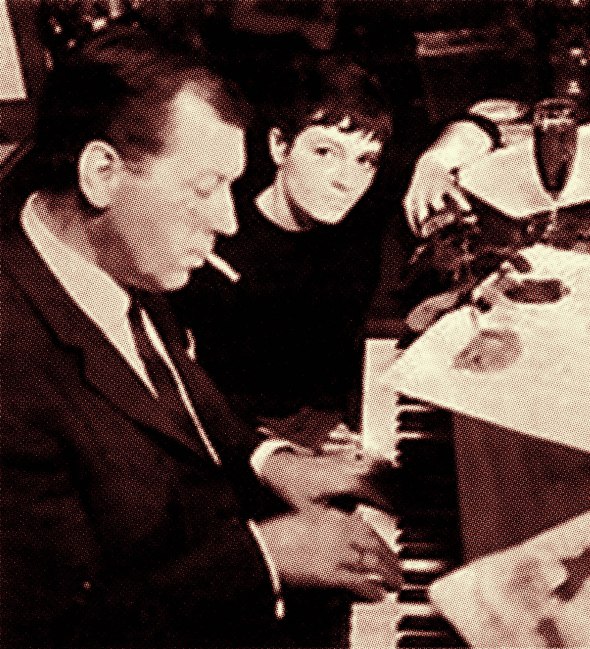

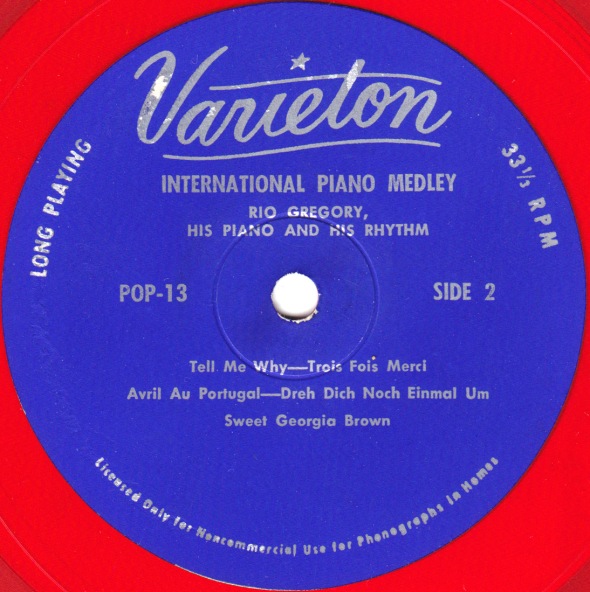









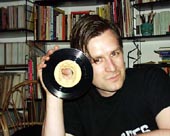 About me:
My name is Andreas Michalke. I´m a cartoonist from Berlin, Germany and I like collecting records. Most of the records I find in thrift stores or at flea markets here in Berlin. I like a lot of music but I thought I`d focus on odd German records. Preferably with cartoon covers.
All my scans are high-resolution. If you double-click on them they will get much bigger.
About me:
My name is Andreas Michalke. I´m a cartoonist from Berlin, Germany and I like collecting records. Most of the records I find in thrift stores or at flea markets here in Berlin. I like a lot of music but I thought I`d focus on odd German records. Preferably with cartoon covers.
All my scans are high-resolution. If you double-click on them they will get much bigger.
Recent Comments